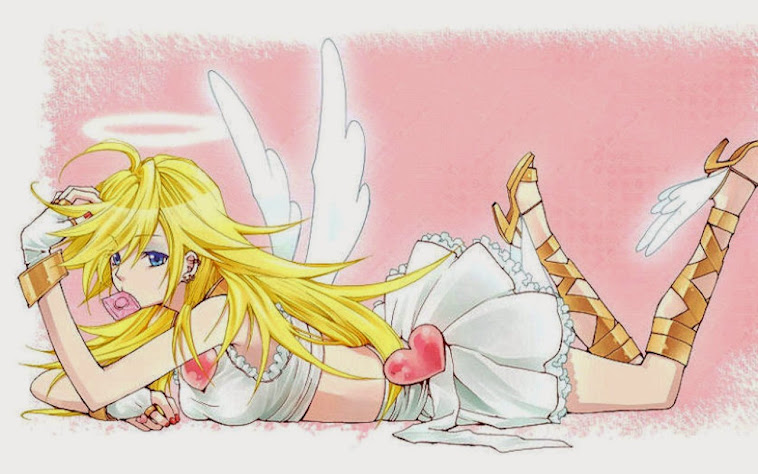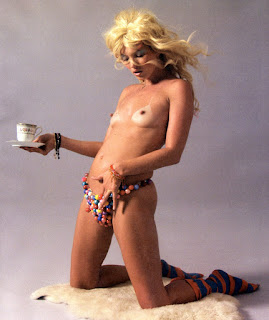Wow is it December already? I'm not feeling very festive yet. Even though we have so much snow and it looks reeeaally pretty and it's cold, I have yet to receive that christmas spirit =/ The year before last year I was getting giddy about christmas after Halloween. I was living in England....yeah...I miss England. That December in England was so beautiful (even though there was the whole trouble with Heathrow and such). Christmas commercialism is so over the top in England that no wonder I'm not feeling the christmas vibe. But to be fair, I haven't been to the city (Helsinki) in quite a while. I just go to work, and then I go home (I live in the suburbs). Bah, I'll get my game on in no time =D
And The Hobbit, Omg The Hobbit came out today =D And my little sister and my future brother- in-law are coming home for christmas. They're bringing their baby bunny with them. It's Mochi's first trip to Finland. I can't wait to see all three of them. And I have managed to secure all my shifts at the restaurant so all I need to do now is, well do them. Then I'm off to London! Everything is coming up roses <3
 | ||
| Untitled. |
A very depressing beginning don't you think. At school Darger didn't get a long with the teachers or the fellow pupils. He often quarrelled with the teachers about history, particularly about the Civil War. Darger himself said that his 'problem' was being able to see through adult lies. He described himself as the smart-aleck, a person who is obnoxious to the point of being actually smart and cleaver. He seemed to take a very arrogant stand on everyone around him. He also went through a lengthy phase of 'feeling compelled' to make strange noises earning him the nickname 'Crazy'. “Me, a retard! I knew more than the whole bunch of them”, he later wrote in his journal. It's possible that some of the punishments Darger went through at The Lincoln asylum seem to have worked their way into the Realms of the Unreal. Darger later said that there were also good times there, he found some of the work enjoyable, and he had friends as well as enemies. (that may be, but in reality our mind plays tricks with us, so sometimes we can't really remember just how bad our bad times were).
Darger tried to run away several times, but it wasn't until he was 16 that he finally succeeded and returned to Chicago in 1908. According to his autobiography, on his way to Chicago, he witnessed a huge tornado that devastated the central Illinois. He described it as "a wind convulsion of nature tremendous beyond all man's conception". Subsequently weather became one of the key characters in Darger's paintings. The tornado demolished a little and nobody was hurt.
In Chicago, with the help of his godmother, young Darger found minor work in a Catholic hospital. Darger continued to support himself with odd jobs until his retirement in 1963. When the first World War came, Darger was glad to join the troops. How unfortunate for him, he was discharged and sent home a few months later. Evidently he was unfit for the duty both mentally and physically.
Back in Chicago Darger started attending mass daily and he became a very religious man. In 1930 he settled into a second-floor room where he wrote and painted his massive In the Realms of the Unreal. At this time he tried to adopt several times, but he was always turned down. I believe Darger longed for real companionship with someone, and perhaps one of the reasons he wanted to adopt was because he wanted to save a helpless child from the same life he had had so far. Evidently Darger was very found of children, but unfortunately he'd have to spend the rest of his life alone. Darger died on April 1973 in St. Augustine's Catholic Mission home, the same place his father had died in. A little later Darger's landlord Nathan Lerner went to empty Darger's room and found all his paintings and drawings and collages along with bunch of Crucifixes and small statues of the virgin Mary and knick-knacks. On the walls he saw newspaper clippings about awful incidents and events. Then Nathan pulled up a massive book bound by hand. It was too big to open inside the room. The book revealed art material and writing dating back to 40 years. Parchment and paper glued together, paintings, drawings, collages, watercolours. And then, there was the book of 15145 pages called "The Story of the Vivian Girls in What is Known as the Realms of the Unreal, of the Glandeco-Angelinian War Storm Caused by the Child Slave Rebellion”. It's a 13 volume 'novel' and I'm a little confused whether it has never been published or if there are couple volumes available. Would be an interesting read I'm sure. Apart from his paintings and the first book, Darger also wrote a sequel of over 8000 pages. In the sequel, the Vivian Girls have come to Chicago. He also wrote an autobiography, of which the first 206 pages are dedicated to his childhood and the remaining 4878 pages describe a 'fantasy' tornado called “Sweety Pie” (probably the same tornado he saw). On top of all this, his journal.
With his work Henry Darger created a new art movement which embodies naivism and outsider art: Dargerism. Personally I think it's such an honour for Darger to have a real art movement named after him. And it's such an honour to Outsider Artists as well. It's well deserved since Darger made such a grand contribution to the American art and to the art world.
 |
| Untitled 2. |
 |
| Vivian Girls Watching Approaching Storm in Rural Landscape. |
Whilst 'Untitled' foreshadowed bad things, this Vivian Girls painting is a much happier painting. Even though they are expecting a storm, everything is still fine at the moment. This is such a beautiful and unique painting! It reminds me of really old hand-painted postcards, but this is like a haute version of them. I wouldn't mind putting this up on my wall =D
I'd like to direct your attention to the Vivian Girls now. Notice how well Darger has drawn and then coloured the girls. His drawing is so simple and delicate. Drawing peple's faces can be a challenge because most of the time the result is more cartoonish than realistic, but Darger has doged that pit. It's probably the simplicity of his style that has helped him to avoid the cartoonish look. Of course the paintings look a little cartoonish, but in a good, fine art way. (I like cartoons too). In this piece we also get to see some of that playful side of Darger. Well maybe it's not supposed to be playful, but symbolic of children's Hermaphroditical tendencies.
It's otherwise unclear what Darger wants to say with these girls with penises. Couple reviewers say that Darger was unfamiliar with the female body, so that's why some of the Vivian Girls have penises. Whilst I think that this is a representation of sexless kids. After all, all kids are sexless until their parents (and the society) start to school them about their actual gender. Notice that in Darger's paintings there are also characters who lack gender all together. They look like children, but lack the standard features of either male or female character. Which brings us back to the Hermaphroditic option. However this young-children-naked thing that's crusial part of the series doesn't seem inappropriate or creepy at all. Maybe it's the bright colours and all the innocence that make the nakedness seem natural. I imagine that Darger wanted to express children's curiosity with the nakedness, it's not uncommon that children run around naked at one point in their lives because they don't have that sense of respect or shame yet. The happy colours intergrate with the scene and seem to highlight that innocent-naked-children theme even more. The colours make the whole scene more child-like and sweet. The place the Vivian Girls live in is made by children, for children. It's incredible how Darger managed to create such an original tale and art even after such a loveless childhood. To me it seems like the Realms of the Unreal was created by a very happy person who had a very happy childhood. (But then again I guess this is one of those psychological things that 'if you only see good things happening, you can't help, but become depressed' kind of things). But then, the Vivian Girls come across with the Glandelians...
 |
| At Battle of Drosabellanaximillian. |
All this makes me wonder who does get to decide when it's our time to grow up? Does our enviroment really effect us so much that without us noticing, it literally forces us to grow up. And without noticing, we grow up. I'm just thinking about my adolescence and how I wanted to be a grown up already so that I could do all the fun things grown ups do. And now, in my mid-twenties I'm thinking about my decaying youth >_<
Personally I don't think it's really the adults who force their children to grow up quickly. It's people in general. People who work in marketing for example have done an amazing job marketing shit for everyone, even marketing dramas and cartoons about high school stuff to 10 year old girls and make them really want to live the high school life of a 17 year old. How twisted is that? Ahem, I digress. Darger raised good points about adults spoiling children's innocence. But since I have a little cynic living inside me, I can say that I have met some pretty shitty children too (no matter how hard their parents try, their children are still shitty). Again focus your attention on the detailing Darger shows here. It's marvelous the way Darger leaves the people and the ground white/yellowish to bring the viewer's attention to the character's clothes and flags. Supposedly the painting/scene from the story is not about the people who are fighting, but about the clashing ideologizes. Really truly beautiful and deep painting to behold.
Darger wrote two endings for the Vivian Girls. In the first one christianity and the Vivian Girls win. In the other one the girls are defeated and their world is thrown into godlessness. You tell me which one you prefer.
 |
| Untitled 3. |
Darger's 'Untitled' and other paintings can be seen in The Simpsons, season 20 episode 09 'Lisa the Drama Queen'. Lisa and her new friend go to a museum and you can see Darger's work on the wall. That was a nice surprise from The Simpsons.
Below is a trailer of Jessica Yu's documentary of Henry Darger and the Realms of the Unreal.
I didn't know about this documentary until I started researching for this review. It looks really interesting and I shall check it out soon.
http://www.youtube.com/watch?v=MSzzirIP0No
And here's a link to the American Folk Art Museum which has the biggest Darger collection in the world. http://www.folkartmuseum.org/darger
That's it for this review. I'll see you again before New Years with my 2012 post. What has happened to me in 2012 =D
Have a very Merry Christmas everyone!! Thank you for reading!
A.P












